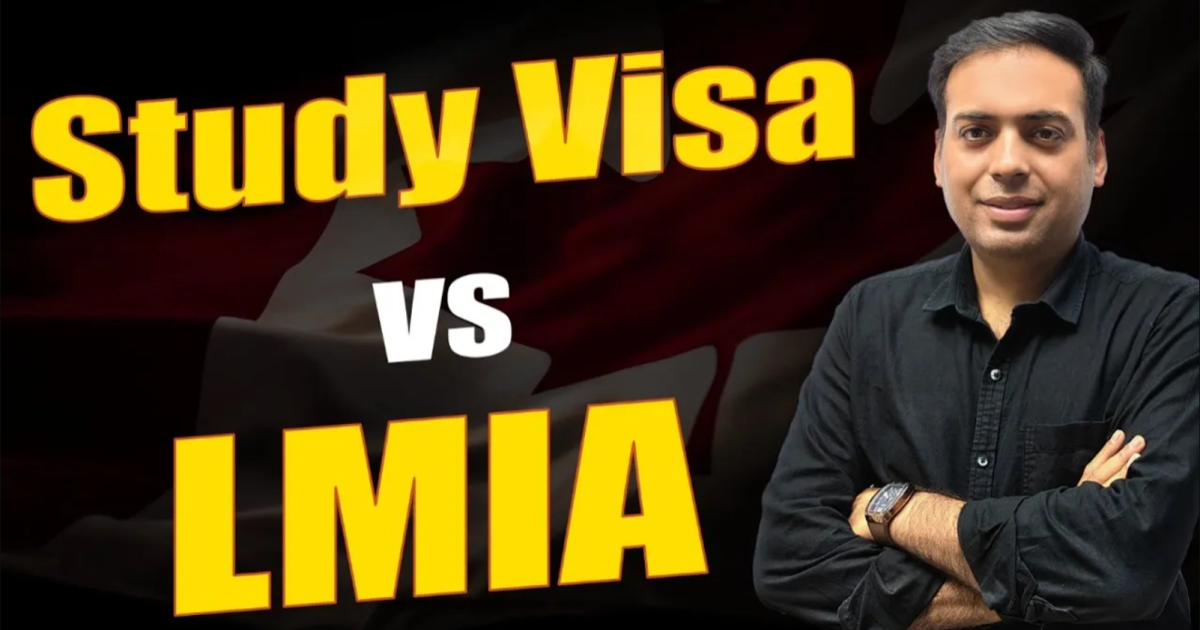Table of Contents
ToggleStudy Visa vs. LMIA-Based Closed Work Permit – Which is Better for Canada?

Canada is one of the most popular destinations for people from India and the subcontinent. Many applicants are often confused between two major pathways to Canada: Study Visa and LMIA (Labour Market Impact Assessment) based Closed Work Permit.
At first glance, the LMIA route may look attractive – lower upfront cost, direct work permit, and no need to study. On the other hand, the study visa requires IELTS, higher financial proof, and tuition fees. But when you look deeper, the real picture is very different.
In this blog, Globexa Immigration will break down all myths around LMIA and compare both options step by step so that you can make an informed decision for your Canada journey.
1. Duration of Stay in Canada
Study Visa:
2 years of study + up to 3 years Post-Graduate Work Permit (PGWP).
Total: Minimum 5 years stay.
Enough time to gain Canadian experience and apply for Permanent Residency (PR).
LMIA Work Permit:
Usually 2 years tied to a single employer.
Limited scope for PR within such a short duration.
Extension requires employer support or extra payment.
Verdict: Study Visa provides longer stay and more security.
2. Cost of Extension
Study Visa: No cost for PGWP after study. Once you finish your course, the open work permit is free.
LMIA: Extending stay can cost CAD $30,000–$40,000 depending on the employer and consultant.
Verdict: Study Visa is cheaper in the long run.
3. Work Rights During Stay
Study Visa:
24 hours per week during studies.
Unlimited full-time work on PGWP.
Can work for any employer, in any NOC code.
LMIA:
Closed permit – restricted to one employer, one NOC code.
No flexibility to change jobs.
If your NOC code is removed from PR eligibility, you’re stuck.
Verdict: Study Visa offers full flexibility and freedom.
4. Spousal Visa Possibility
Study Visa:
With a 2-year master’s program, your spouse can get an open work permit.
Family can stay together for the entire 5-year duration.
LMIA:
Spouse visa is possible only if:
You still have 16+ months left on your permit.
Your NOC code is eligible (Tier 0, 1, or selected Tier 2 & 3 jobs).
Very limited and complicated.
Verdict: Study Visa keeps family together with fewer restrictions.
5. Upfront Cost
Study Visa:
Approx. ₹26 lakhs (CAD $42,000–$43,000).
Out of this, CAD $23,000 GIC is fully refundable after arrival.
Actual net cost in Canada = around CAD $20,000 (₹12–13 lakhs).
LMIA:
Authentic LMIAs cost ₹30–40 lakhs in India.
Most of this money goes directly to employers/agents with no refund guarantee.
Verdict: Despite popular belief, Study Visa is cheaper and safer.
6. IELTS Requirement
Study Visa: Requires IELTS Academic (usually 6 bands overall).
LMIA: Requires IELTS General (5.5–6 bands, depending on job).
Myth: LMIA doesn’t need IELTS. Reality: Without language proof, refusal is likely.
7. Fraud Risk & Exploitation
Study Visa:
Very low fraud risk if applied through recognized universities and consultants.
Refund options available if admission/visa fails.
LMIA:
High fraud cases in Punjab & India, with scams ranging from ₹5 lakhs to ₹25 lakhs.
Many applicants lose money and get no job or permit.
Even after arrival, exploitation by employers is common.
✅ Verdict: Study Visa is much safer and regulated.
8. PR Pathway & Return on Investment
Study Visa:
2 years study + 1–3 years work = direct PR eligibility in most cases.
Higher chances of getting PR within 2–3 years.
Better return on investment.
LMIA:
PR chances uncertain – depends on NOC, CRS points, and extensions.
High extra costs make ROI very poor.
Final Verdict: Study Visa Wins
While LMIA-based closed work permits may seem like a shortcut, they are expensive, risky, and restrictive. Most people end up spending more money, face fraud risks, and still fail to secure PR.
On the other hand, Study Visa is safer, more affordable, and gives a clear pathway to PR. It allows flexibility in work, family settlement, benefits, and long-term career growth in Canada.


